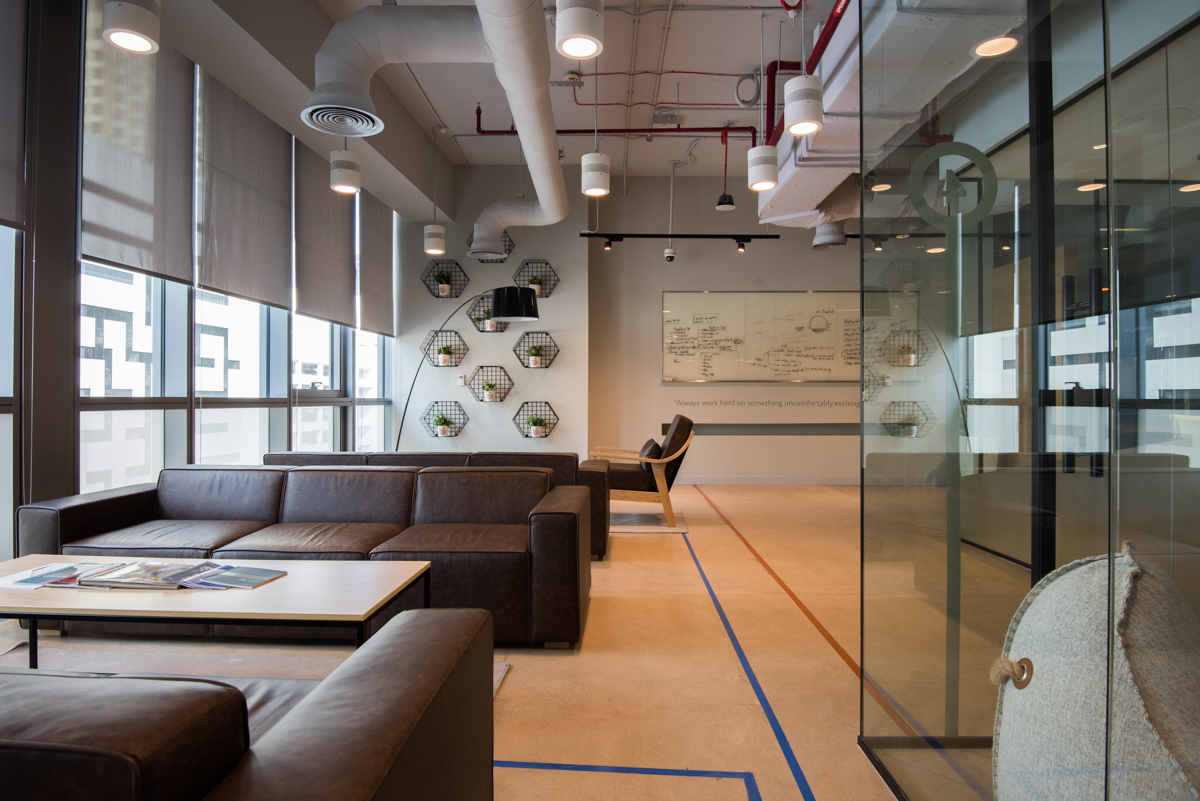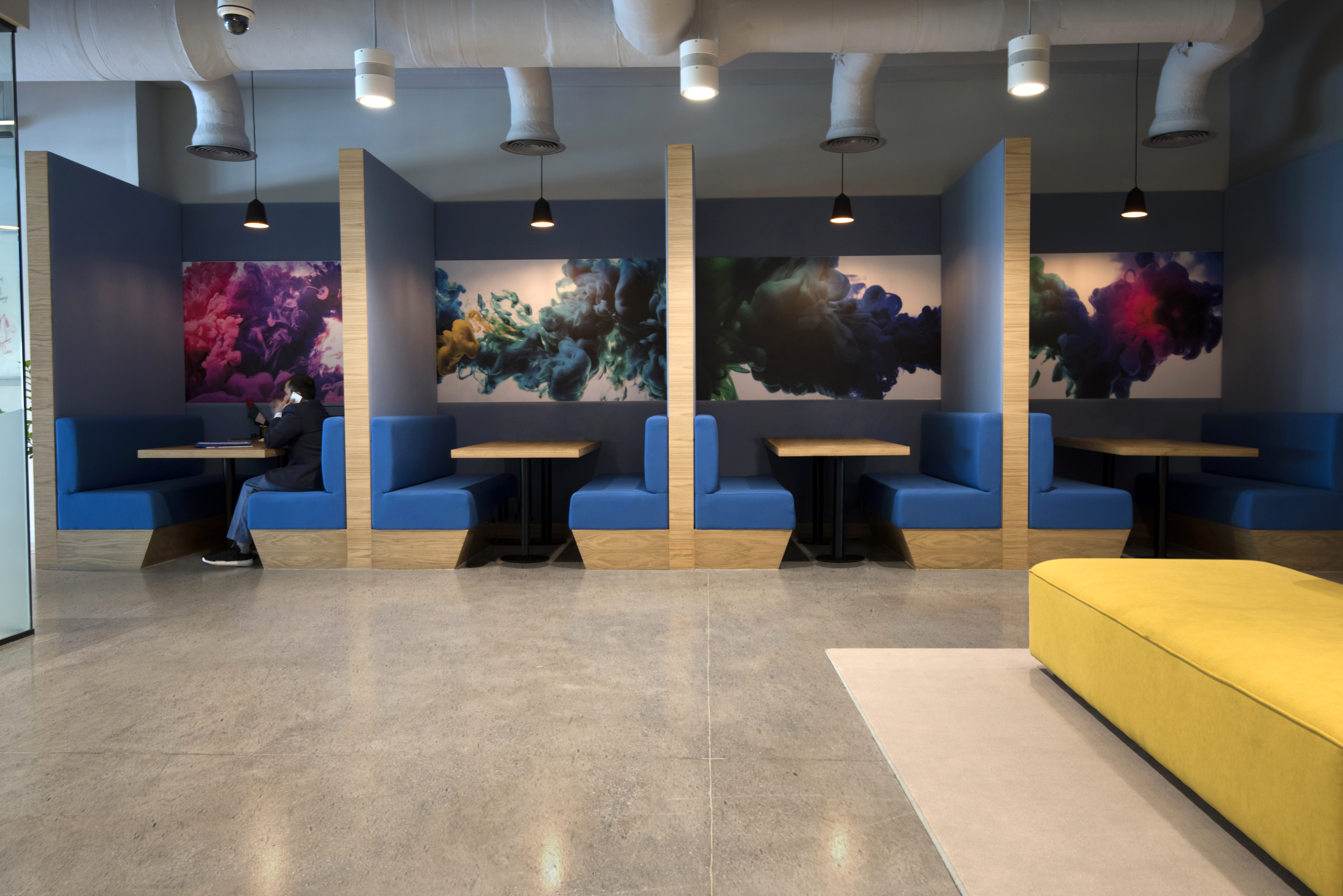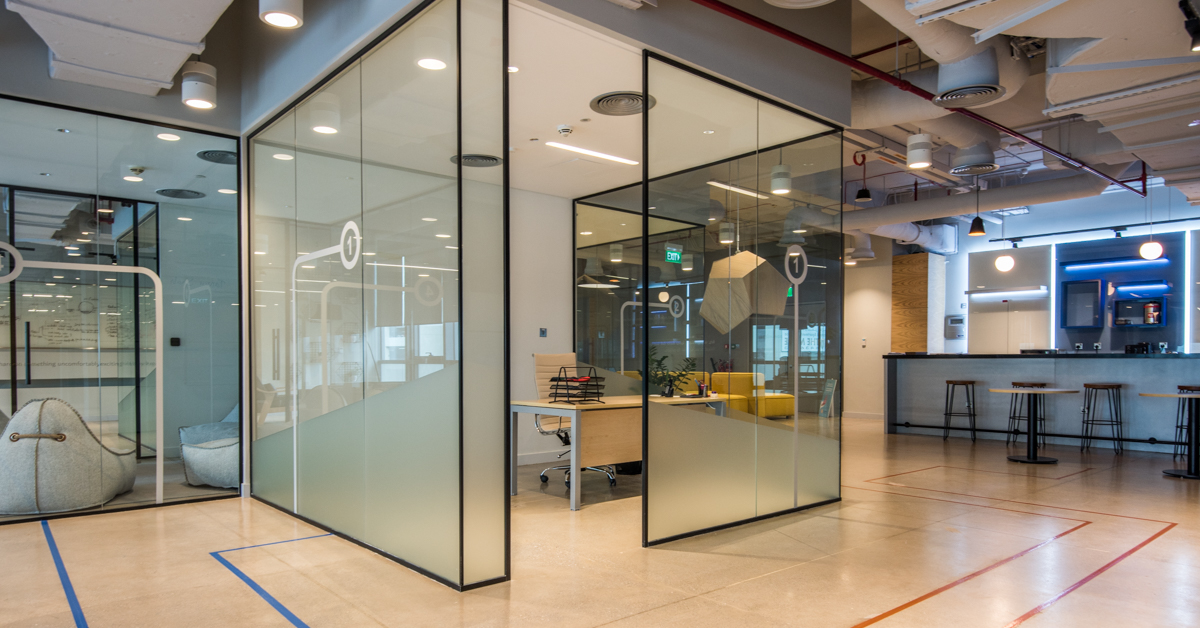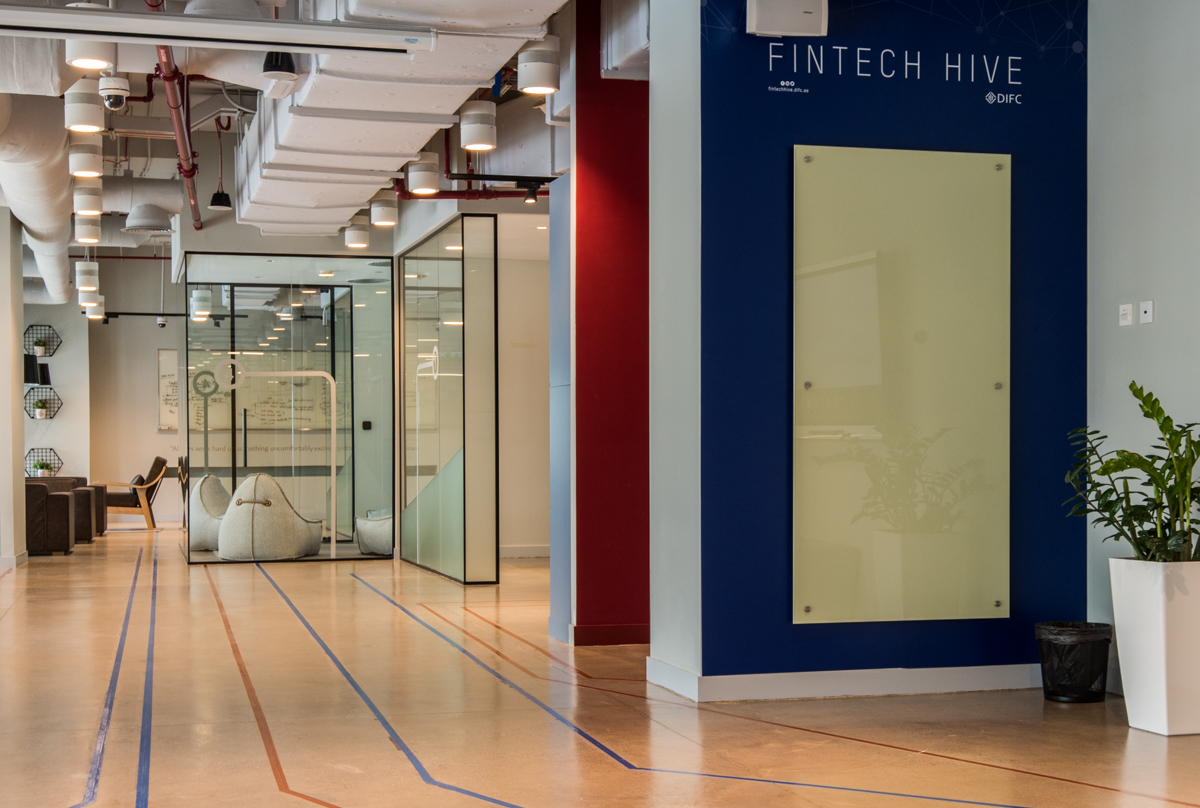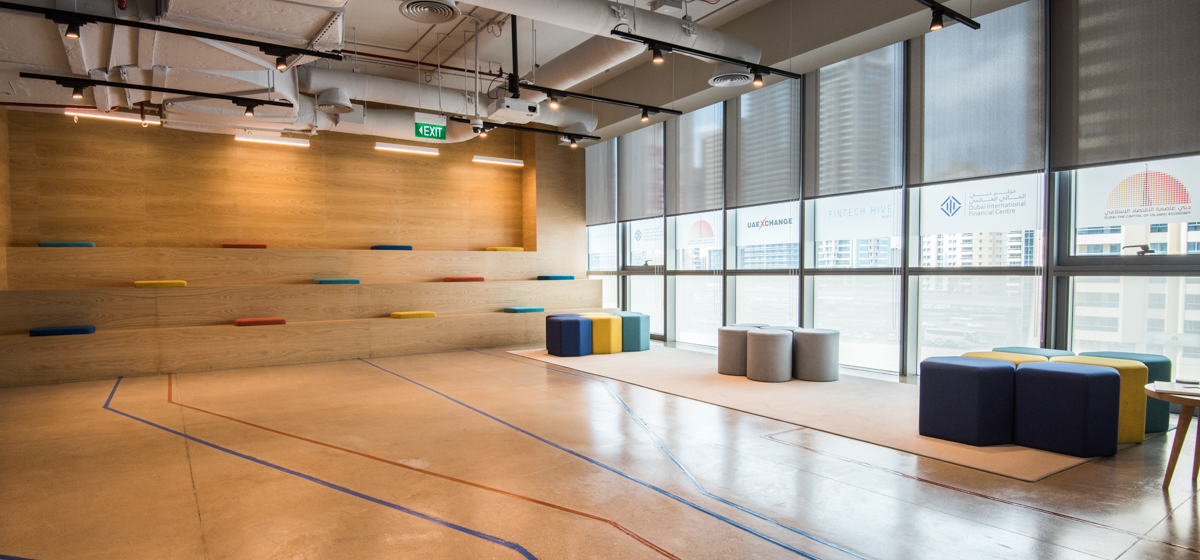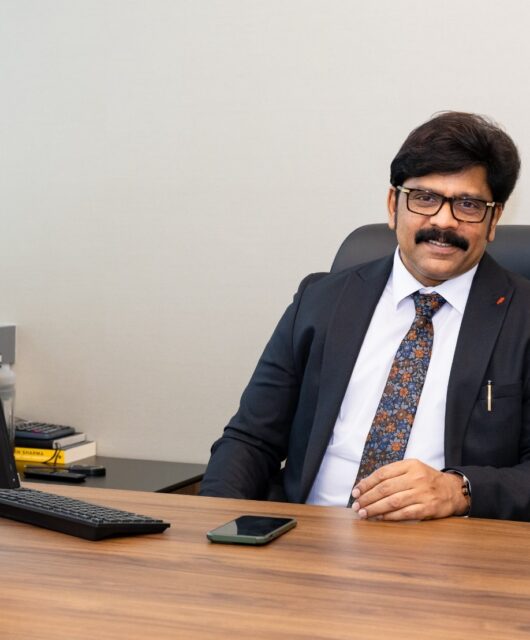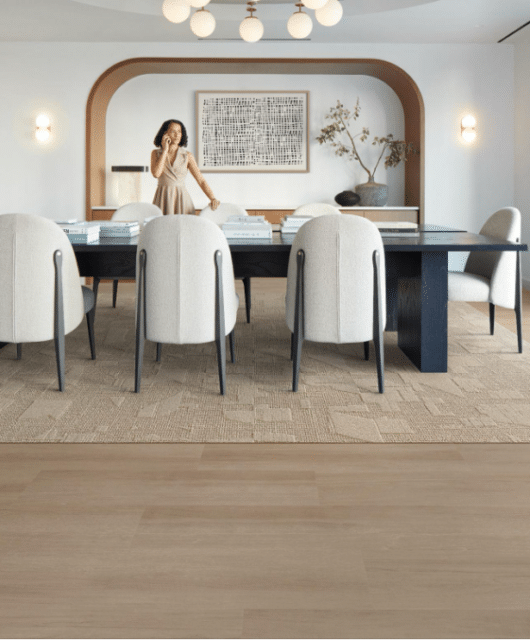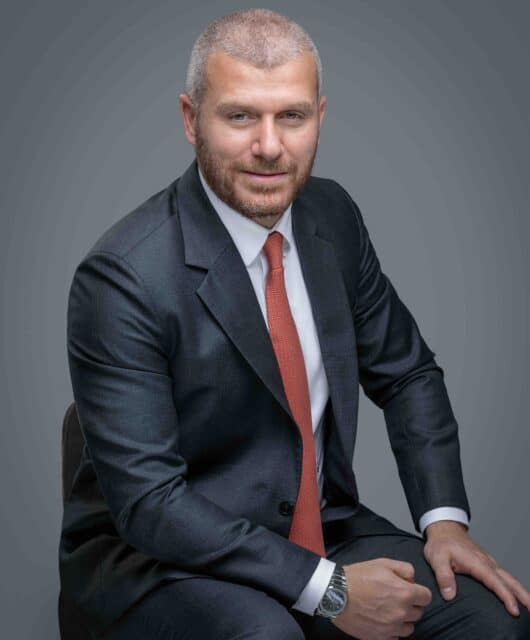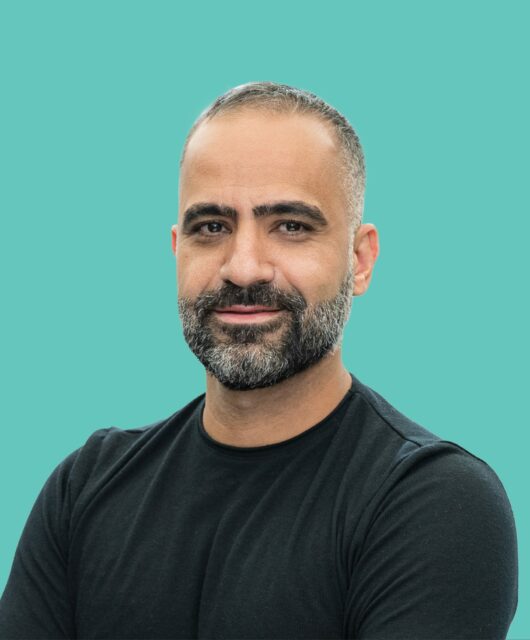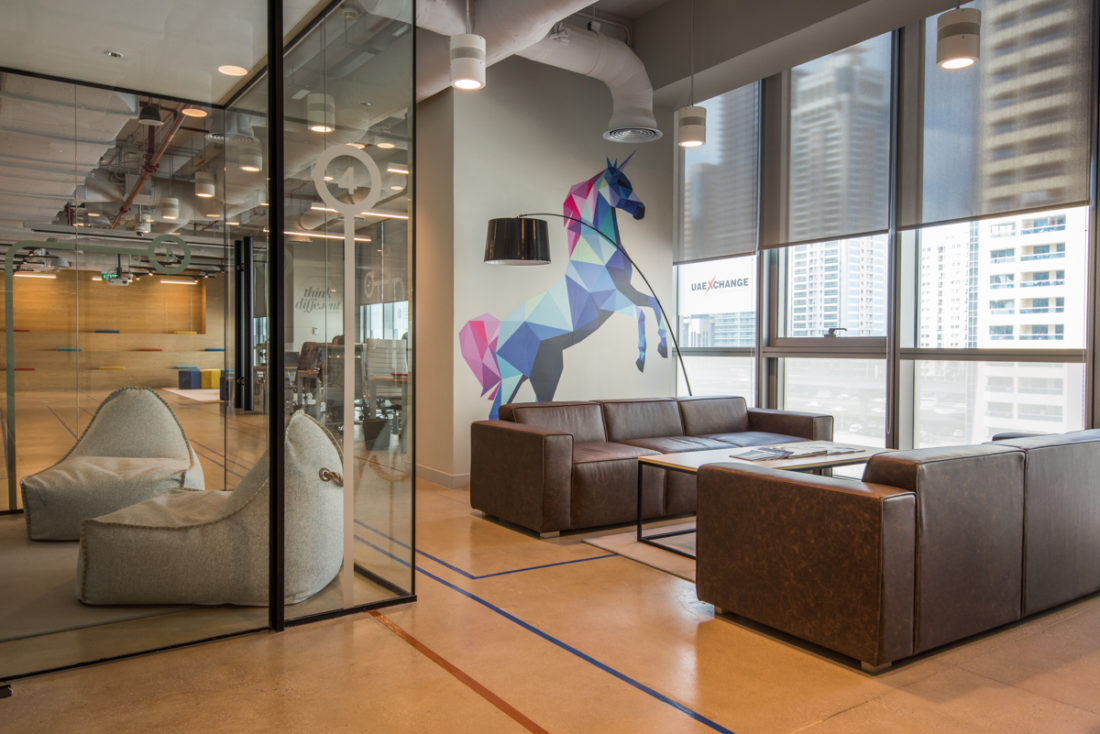 JPA Design completes the designs for Fintech Hive at DIFC, a 350sqm co-working space development that aims to offer the world’s most innovative start-ups a conducive and dynamic environment to test, develop, and adapt solutions to meet the evolving needs of the region’s financial service and insurance industries.
JPA Design completes the designs for Fintech Hive at DIFC, a 350sqm co-working space development that aims to offer the world’s most innovative start-ups a conducive and dynamic environment to test, develop, and adapt solutions to meet the evolving needs of the region’s financial service and insurance industries.
DIFC Properties turned to JPA Design to design an ideal space, connecting tech innovators to a network of financial leaders. Nancy Fares, senior interior architect at JPA Design, was instrumental in the designing of Fintech Hive, leading the project from concept to construction.
It features 33 work areas including flexi-and-fixed-desks, small meeting rooms, dedicated phone booths and breakout areas, as well as a 200-capacity multi-functional auditorium for seminars and talks. In conceptualising the varied work areas, the team was challenged to create flexible, dynamic, and multi-functional spaces that exude a sense of community, bearing in mind that these would serve as temporary workspaces for start-ups. Unlike traditional offices, a co-working environment means designers don’t have the luxury of being able to know who will use the space, an aspect that constantly changes.

The team’s inspiration for the project revolved around three key elements: technology; the stock market, and the motherboard. Like circuits of a motherboard, the trims on the floor connect the central hub – two conference rooms and two managers’ offices – to the workspaces. The central hub, where start-ups present their solutions to financial leaders, is designed to be the most important area within this space. Number, bar, and line charts decorate the locker walls, drawing inspiration from the stock market; the lockers are of different heights much like a bar chart. The hexagon shape, reflective of the hive, is incorporated in a variety of fixtures including the furniture, the phone booth and planters.
An open ceiling was used to illustrate the dynamicity and the infinite possibilities of the ideas and solutions created by start-ups. This also aims to further enhance a sense of community and teamwork throughout the open areas. Nature played an important part in the design, with a natural environment of plants, timber finishings, earthy fabrics, an exposed ceiling and plain concrete flooring. These elements, along with areas that enable access to natural sunlight, improve employee well-being, productivity, and energy levels.

